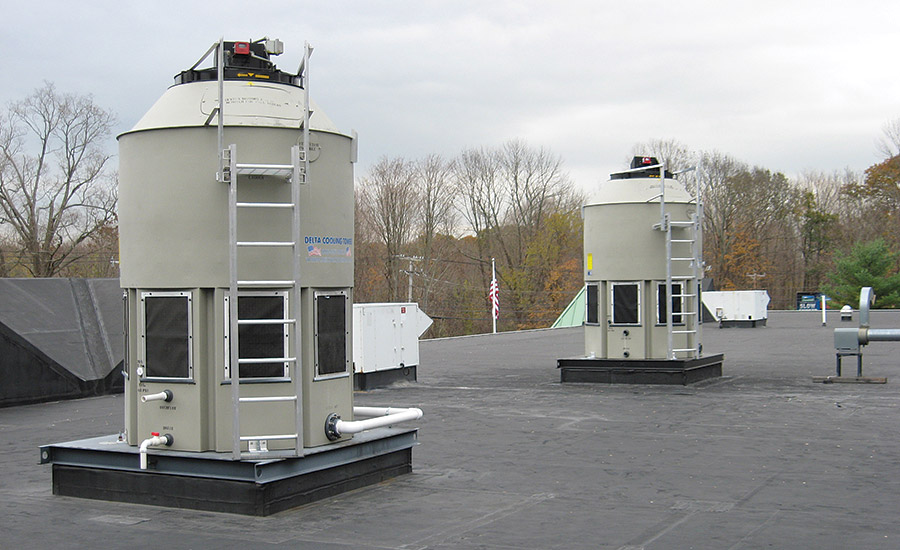When you consider the products introduced to the marketplace in the early 1980s, most of them are no longer in use. During that time, for example, the first personal computers were running the DOS operating system, the DeLorean “Back to the Future” sports car hit the street, and Sony was offering the world its Betamax video cassette player and the Walkman personal music player.
The year 1981 also saw the introduction of the world’s first 150-ton molded seamless plastic cooling tower. Featuring a seamless high-density polyethylene (HDPE) shell, this design was essentially impervious to the corrosion problems that plagued conventional, metal-clad cooling towers, resulting in exorbitant downtime for frequent repairs or replacement.
Today, after 34 years of virtually continuous operation, some early HDPE cooling towers are still running strong, including the one installed by chemical manufacturer Ardmore Inc. in Newark, NJ.
Ardmore’s cooling tower is the second Paragon® unit manufactured by Delta Cooling Towers, Inc. In the early 1970s, Delta developed the first HDPE towers with forced draft models ranging from 10-100 cooling tons. The Paragon model that Ardmore installed was introduced in 1981 as a line of induced-draft, counter flow design that offered 55-250 cooling ton capacities. Ardmore’s unit is a 150-ton model.
Besides an advanced design, one of the unique features of these cooling towers was its 10-year warranty (20-year currently), which the company said was inconceivable at that time for a conventional cooling tower.
When he first looked at the HDPE cooling tower, Ardmore President Albert Sharphouse thought that the unitary plastic shell would last far longer and operate more economically than metal-clad cooling tower designs.
“We chose the Delta tower because plastic is non-corrosive, so it would last far longer,” Sharphouse explains. “Secondly, we use city water for makeup in the cooling tower, and the HDPE shell design would not require expensive water treatment chemicals (only dichloride tablets are used), so that would provide ongoing economies.”
Ardmore, which manufactures a variety of chemicals, uses the cooling tower to extract heat from the water flowing through the heat exchangers and jacketed production vessels as well as a process flaker. Sharphouse notes that while some of the chemicals and allied products that his company produces have changed over the years, the application and cooling system equipment has remained unchanged.
Located on top of the roof of the building, the cooling tower’s design gives it a distinctive, somewhat futuristic look, less industrial-looking than many traditional towers, according to Ardmore’s mechanical engineer, Walter Sommer.
Sommer feels that some people don’t to realize that cooling towers are exposed to continuous evaporation, salts, and other aggressive elements that contribute to corrosion in metals. When a cooling tower has to be replaced, the consequential downtime can be noticeably damaging to the owner’s production schedule and bottom line.
Sommer adds that the HDPE tower still provides a “green” benefit after 34 years of operation, not only because of its longevity but also because it doesn’t require harsh water treatment chemicals. Also, the cooling tower provides improved sustainability, greater energy efficiency, added water conservation, and a smaller carbon footprint.
Sommer says maintenance and downtime have been minimal, as well. While he has replaced the motor and bearings over the years, in the overall, service has been nominal. A two-speed motor powers Ardmore’s cooling tower fan and water circulator with a belt-driven fan. While many cooling tower users specify a direct drive motor (Delta’s standard offering now) for energy savings, Sommer is happy with the belt-driven design.
“The motor with the belt drive has been very reliable over the years,” he explains. “In the summertime we run it on high, and in the wintertime we just switch it over to low speed. That is part of the beauty of the cooling tower’s design simplicity, and why it has been so good for our application.”




